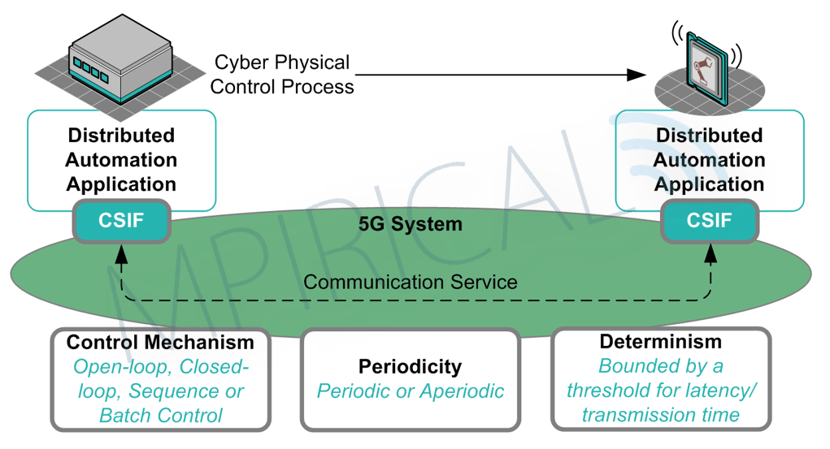
The Role of 5G Within Industry 4.0
On the whole, the global manufacturing industry is seeing a fundamental change as it experiences the fourth industrial revolution or “Industry 4.0”. 5G is considered to be a potential key enabler, since many of the facets of Industry 4.0 such as flexibility, versatility, resource efficiency, cost efficiency and logistics can directly or indirectly be facilitated by 5G, often through a Private 5G network.
Cyber-physical production systems, which contribute to many Industry 4.0 use cases are one of the key areas of focus. These systems relate to engineered, interacting networks of physical and computational components. The computational components which are responsible for controlling the physical components must have a communication channel which is extremely reliable and often has very low latency. Both these aspects can be provided by the URLLC services of 5G.
As the following figure shows, 5G provides a Communication Service between the computational component and the physical component, with each using a CSIF (Communication Service Interface) for interfacing with the 5G network. The requirements placed on that 5G network are dependent on the use case. Factors such as the control mechanism (Open-loop, Closed-loop, Sequence or Batch Control) in addition to the communication attributes (periodicity and determinism) must be considered.

By employing 5G technology in an industrial environment, it helps to facilitate the replacement of older communication technologies (in some cases, very old). This fact, coupled with 5G’s ability to support TSN (Time Sensitive Networking) in support of deterministic message transfer, means that 5G is being increasingly seen as a perfect option for supporting communication services in the industry of the future.
If you’d like to learn more, feel free to check out our 5G Use Cases course.
